The zigzag stitch is a fundamental technique in sewing, offering versatility for various fabric types and applications. However, encountering skipped stitches can be a perplexing challenge for any sewer.
This hiccup can disrupt the fluidity of your work, leading to uneven and unreliable results. To master the art of sewing, it’s crucial to understand why these skips occur.
Factors like thread tension, needle quality, and bobbin intricacies all play a role. In this guide, we’ll delve into these potential culprits and provide practical solutions, empowering you to troubleshoot and resolve this issue effectively.
Doing so’ll elevate your sewing endeavors to a level of precision and proficiency.
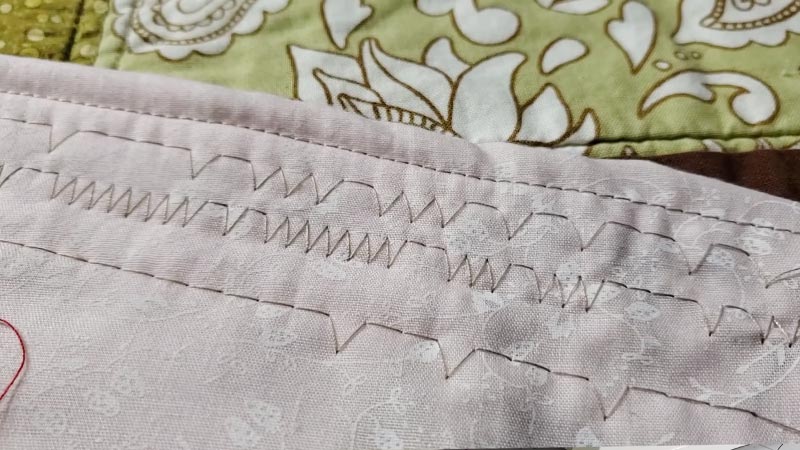
What Is a Zigzag Stitch?
A zigzag stitch is a versatile sewing technique characterized by a series of diagonal stitches that form a zigzag pattern.
Unlike a straight stitch, which runs in a straight line, the zigzag stitch moves the needle back and forth, creating a secure and flexible seam.
This stitch is commonly used for various purposes, including finishing fabric edges, sewing stretchy materials, and creating decorative accents. It’s particularly valuable for preventing fraying in woven fabrics and allowing stretch in knit fabrics.
Additionally, the width and length of the zigzag can be adjusted to suit various sewing tasks, making it a fundamental skill for both beginner and experienced sewers.
Why Does My Zigzag Stitch Skip? 12 Issues
A skipped zigzag stitch can be frustrating when you’re using a sewing machine for various projects. Zigzag stitches are commonly used for finishing edges, appliqué work, and decorative sewing.
When this stitch skips, it not only affects the aesthetics of your project but also compromises its structural integrity.
There are several reasons why this might happen:
1. Tension Settings
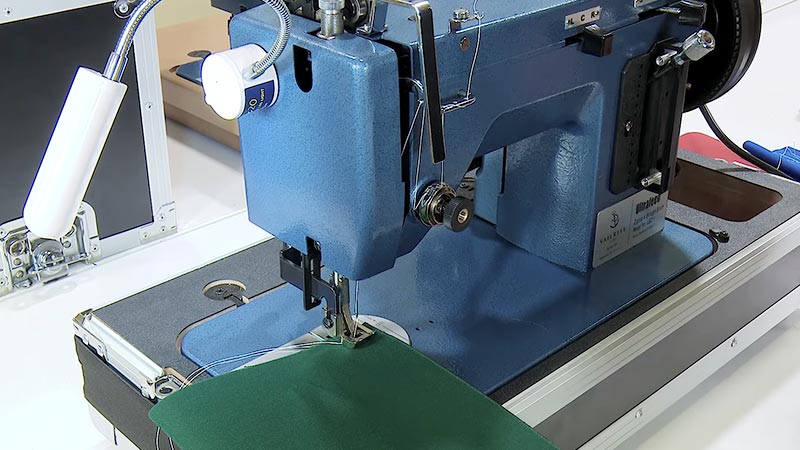
Incorrect tension settings on your sewing machine can lead to a host of stitching issues. When the upper thread tension is too tight, it creates excessive resistance, causing the thread to snap or pull too hard.
Conversely, if it’s too loose, the thread may not adequately engage with the fabric, resulting in skipped stitches. Finding the right balance in tension settings for your specific fabric and project is crucial.
2. Needle Issues
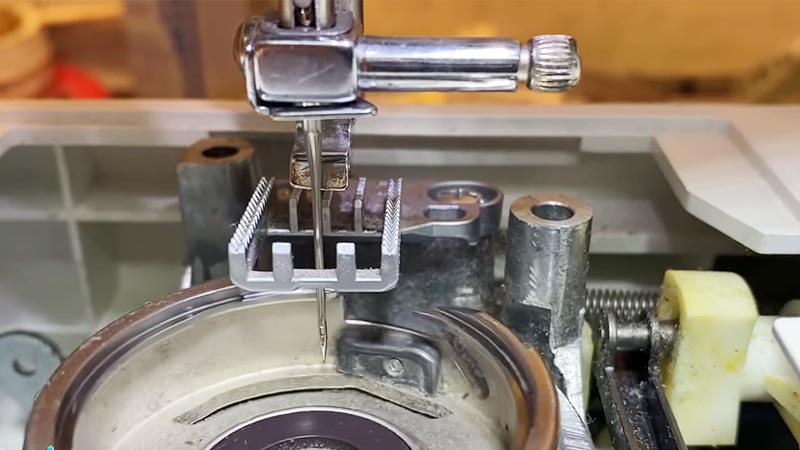
A needle that’s seen better days can wreak havoc on your stitching. Over time, needles can become bent, dull, or even develop burrs.
These imperfections cause them to miss stitches or create uneven seams. Regularly inspect and replace needles, ensuring you use the correct type and size for the fabric you work with.
3. Thread Quality
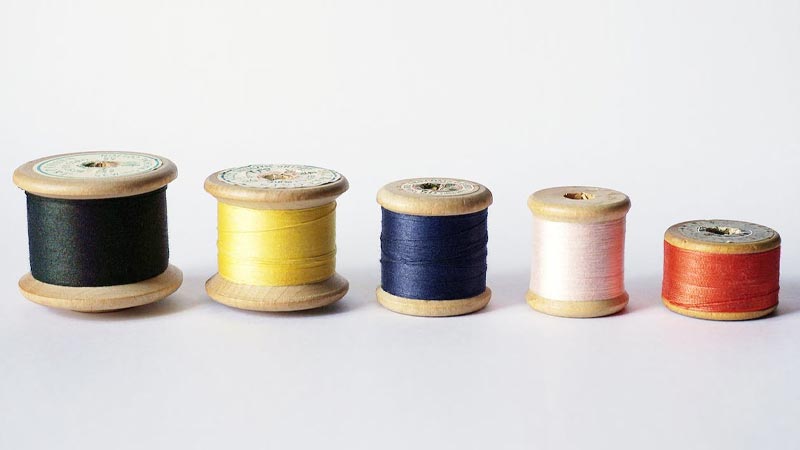
The quality of your thread is paramount to achieving smooth, consistent stitches. Inferior or old threads can be prone to fraying, knots, and other inconsistencies, leading to skipped stitches.
Investing in high-quality thread that matches the demands of your project can make a significant difference in stitch integrity.
4. Bobbin Thread
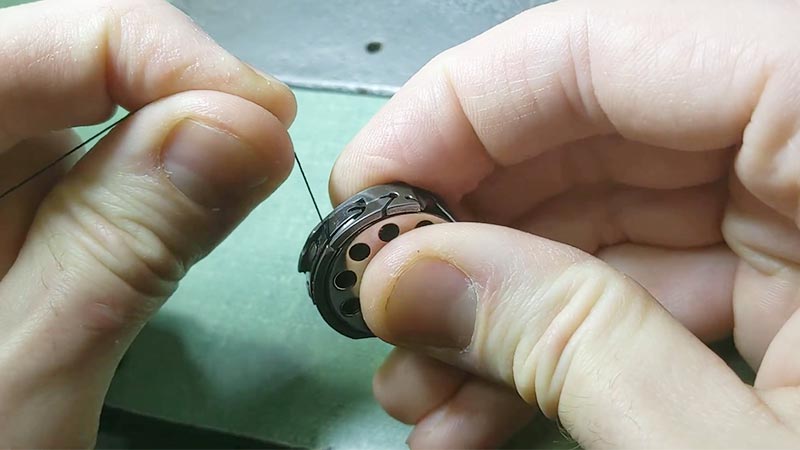
Your bobbin plays a crucial role in stitch formation. If the thread is unevenly wound or tangled, it can disrupt the stitching process.
Ensure the bobbin is correctly inserted and that the thread unwinds smoothly during sewing. Additionally, consider using a bobbin thread that matches the quality of your upper thread.
5. Machine Maintenance
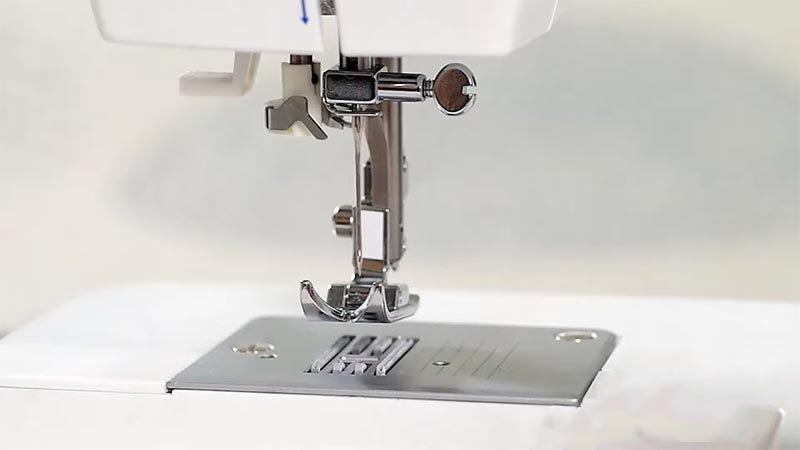
Like any mechanical device, sewing machines require regular upkeep. Dust, lint, and debris can accumulate in crucial areas like the bobbin case and tension discs, leading to stitching problems.
Frequent cleaning and proper maintenance, including oiling as per the manufacturer’s recommendations, can ensure your machine operates smoothly.
6. Fabric Choice
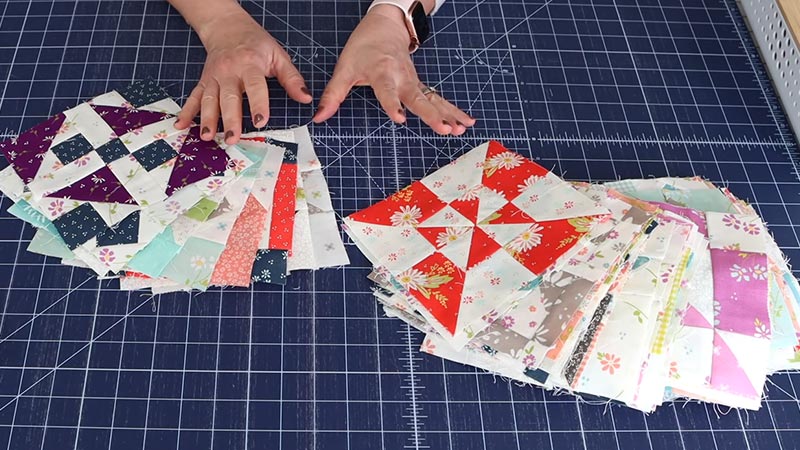
Certain fabrics pose unique challenges when it comes to sewing. Stretchy or lightweight materials, for instance, may require specialized needles, stabilizers, or even a walking foot attachment to prevent skipped stitches.
It’s important to adapt your sewing techniques and equipment to suit the specific characteristics of the fabric you’re working with.
7. Sewing Speed
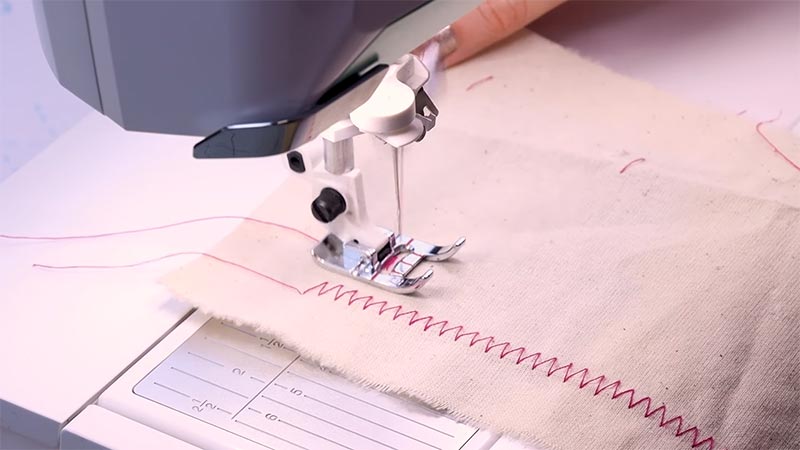
The pace at which you operate your sewing machine can impact stitch quality. Rushing through a project at high speeds, especially when using a zigzag stitch, can result in skipped stitches.
Slowing down allows the machine to form stitches more precisely and consistently, enhancing the overall quality of your work.
8. Incorrect Stitch Length or Width
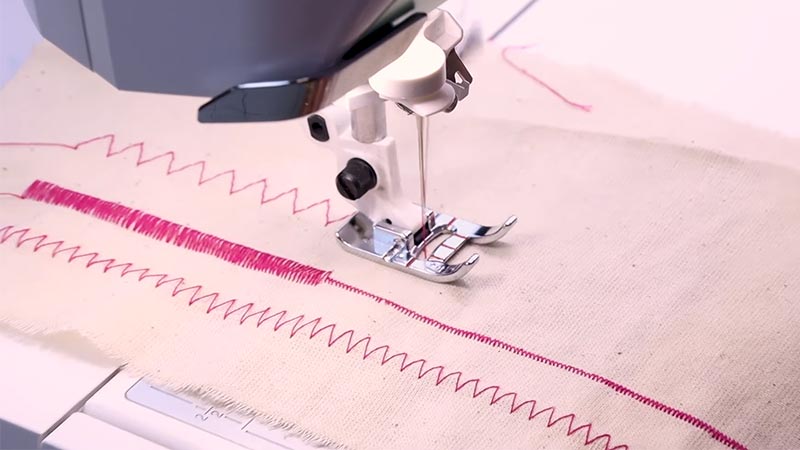
Adjusting your machine to the correct stitch length and width is crucial for achieving the desired results.
An improper setting can lead to irregular or skipped stitches. Take care to consult your machine’s manual and make the necessary adjustments based on your project’s requirements.
9. Bobbin Tension
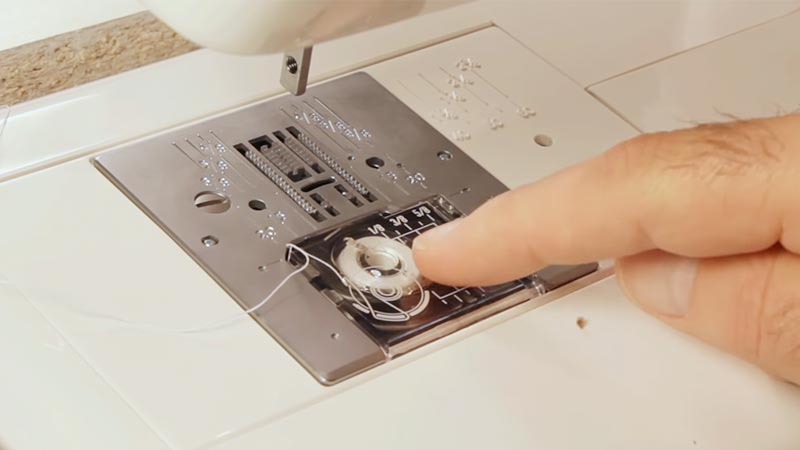
While much attention is given to upper thread tension, the bobbin thread’s tension is equally important. Incorrect bobbin tension can lead to stitching issues, including skipped stitches. Refer to your sewing machine’s manual for guidance on adjusting bobbin tension if needed.
10. Needle Position
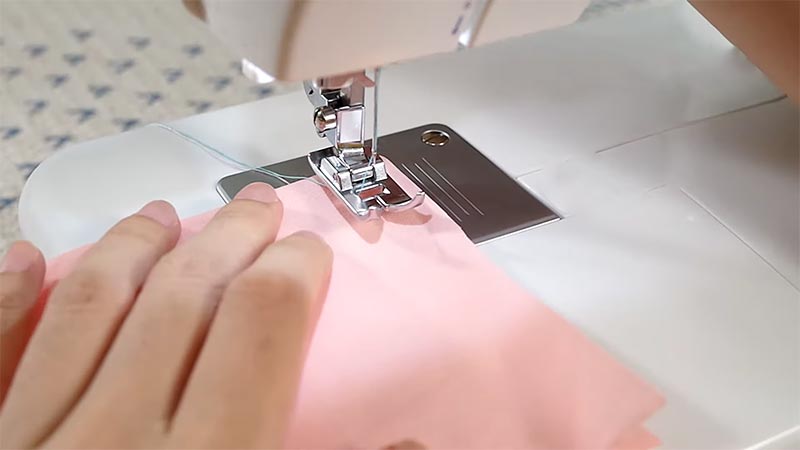
Ensuring that the needle is positioned correctly in the center is vital for a consistent zigzag stitch. It can lead to uneven stitching and skipped stitches if it’s off-center. Double-check the needle’s placement to ensure it’s aligned properly.
11. Thread Path
Threading the upper thread correctly through all the designated guides and tension discs is essential.
A missed thread guide or an incorrectly threaded machine can cause stitching problems. Carefully follow the threading instructions provided in your machine’s manual to avoid any issues.
12. Stitch Plate and Presser Foot
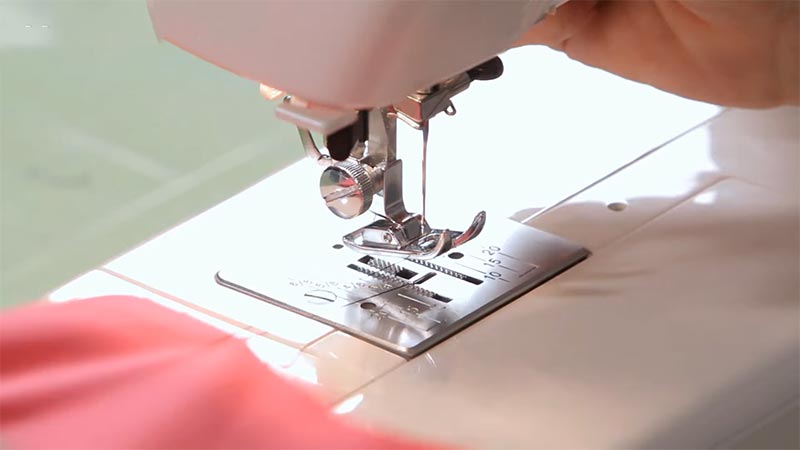
The condition of your stitch plate and presser foot can greatly influence how smoothly the fabric feeds through the machine.
Nicks, burrs, or irregularities on these components can obstruct the sewing process, potentially leading to skipped stitches. Regularly inspect and maintain these parts to ensure they’re in optimal working condition.
Troubleshooting and Solutions
The zigzag stitch is a versatile and commonly used stitch in sewing. However, encountering issues such as skipping stitches can be frustrating.
Fortunately, there are several troubleshooting steps you can take to address this problem.
Check Thread Tension
- Issue: Incorrect thread tension can lead to skipped stitches.
- Solution: Adjust the tension according to the fabric being used. Experiment with small adjustments until the stitch looks even.
Inspect Needle Quality and Position
- Issue: A dull or incorrectly inserted needle may cause skipped stitches.
- Solution: Ensure you use a sharp, appropriate needle for your fabric. Insert it correctly, with the flat side facing the back.
Thread Quality and Size
- Issue: Poor quality or incorrect thread thickness can lead to skipped stitches.
- Solution: Use high-quality thread suitable for your fabric. Check that the thread matches the needle size.
Bobbin and Bobbin Case Inspection
- Issue: A poorly wound or misaligned bobbin case can cause stitch skipping.
- Solution: Wind the bobbin evenly and ensure it’s placed correctly in the bobbin case, with the thread unwinding in the correct direction.
Clean the Machine
- Issue: Accumulated lint or debris can hinder the stitching process.
- Solution: Regularly clean the bobbin area, feed dogs, and tension discs using a brush or compressed air.
Feed Dogs and Presser Foot Pressure
- Issue: Improperly adjusted feed dogs or presser foot pressure can cause uneven feeding.
- Solution: Ensure the feed dogs are engaged and set to the correct level. Adjust the presser foot pressure as needed for your fabric.
Stitch Length and Width Settings
- Issue: Incorrect settings may cause the stitch to skip.
- Solution: Ensure that you have selected appropriate stitch length and width settings for your fabric and project.
Slow Down Stitching Speed
- Issue: Stitching too quickly can lead to skipped stitches, especially on thicker fabrics.
- Solution: Reduce the sewing speed, especially when working with dense or heavy materials.
Bobbin Tension Adjustment
- Issue: Incorrect bobbin tension can cause stitching irregularities.
- Solution: Consult your machine’s manual for instructions on adjusting bobbin tension, or seek professional help if needed.
Seek Professional Assistance
- Issue: If the problem persists despite troubleshooting, it may require professional attention.
- Solution: Contact a qualified technician or the manufacturer’s customer service for further assistance.
Preventive Measures for Zigzag Stitch Skip
Taking preventive measures can go a long way in ensuring that your sewing machine operates smoothly and that you can avoid issues like skipped zigzag stitches.
Here are some key preventive measures you can take:
Regular Maintenance
Regular maintenance is crucial for the longevity and performance of your sewing machine. Cleaning the machine regularly ensures that it operates smoothly without any obstructions.
Use a soft brush or compressed air to remove lint, dust, and debris from areas like the bobbin compartment, feed dogs, and tension discs.
Use High-Quality Thread
Investing in a high-quality thread is a small but significant step toward preventing sewing issues. Choosing thread that is appropriate for the fabric you’re using ensures smoother stitching.
Avoid using old or brittle thread, which can break easily and cause stitch irregularities. When in doubt, opt for a reputable thread brand that is known for its durability and quality.
Proper Needle Selection
Selecting the right needle for your project is essential. Different fabrics require different types and sizes of needles. For instance, using a ballpoint needle for knit fabrics prevents snags, while a sharp needle is ideal for woven materials.
Additionally, ensure that the needle is inserted correctly with the flat side facing the back, and replace it regularly to maintain its sharpness.
Check Thread Tension
Before starting a new project, take a moment to test the thread tension on a scrap piece of fabric. This allows you to make any necessary adjustments before sewing your actual project.
Improper thread tension can result in uneven or skipped stitches, so it’s important to ensure it’s set correctly for the specific material you’re working with.
Bobbin Winding
Properly winding the bobbin is essential for smooth stitching. Ensure the thread is evenly wound and has the right amount of tension. An unevenly wound bobbin can lead to stitching issues, so take your time to wind it carefully.
Adjust Feed Dogs and Presser Foot
The feed dogs and presser feet are crucial in feeding fabric through the machine. Adjust them according to the type and thickness of the fabric you’re sewing.
For example, you may need to increase the presser foot pressure to ensure even feeding when working with thick fabrics. Similarly, for delicate fabrics, lower the pressure to prevent distortion.
Mind Your Stitch Length and Width
Choosing the appropriate stitch length and width settings is essential for achieving the desired results.
For example, when working on a satin stitch for appliqué, you’ll want a shorter stitch length for a dense, smooth finish. On the other hand, a longer stitch length is more suitable for gathering.
Avoid Overloading the Machine
Avoid putting excessive strain on your sewing machine by trying to sew through overly thick or multiple layers of fabric.
This can lead to motor strain and result in stitching problems. If your project requires sewing through several layers, consider using a heavy-duty machine or breaking the task into smaller, manageable sections.
Sew at a Moderate Speed
Maintaining a moderate sewing speed is important, especially when working with dense or heavy fabrics.
Sewing too quickly can cause the fabric to bunch or lead to uneven feeding. Take your time to allow the machine to feed the fabric evenly, resulting in smoother stitches.
Regularly Check Bobbin Case and Bobbin
The bobbin case and bobbin play a crucial role in the sewing process. Ensure that the bobbin case is clean and properly aligned.
Also, double-check that the bobbin is inserted correctly, with the thread unwinding in the right direction. These small checks can prevent a range of stitching issues.
Store Your Machine Properly
When your sewing machine is not in use, it’s important to store it properly to protect it from dust, debris, and potential damage.
Cover your machine with dust or fabric when it’s not in use. Store it in a cool, dry place away from direct sunlight, which can cause damage over time.
Follow the Manufacturer’s Guidelines
Always refer to your sewing machine’s manual for specific maintenance instructions and guidelines provided by the manufacturer.
They often contain valuable cleaning, oiling, and troubleshooting information specific to your machine model.
FAQs
What causes a zigzag stitch to skip?
A zigzag stitch may skip if the needle is dull, bent, or unsuitable for the fabric. The thread tension may also be too tight or too loose, causing the thread to break or loop.
How can I fix a skipping zigzag stitch?
To fix a skipping zigzag stitch, you can try changing the needle, adjusting the thread tension, reinserting or rewinding the bobbin, and cleaning and oiling the machine.
How do I know if my needle is dull or bent?
A dull or bent needle may produce uneven stitches, snag or damage the fabric, or make a popping sound when sewing.
What type of needle should I use for a zigzag stitch?
The type of needle you should use for a zigzag stitch depends on your fabric and thread. Generally, you should use a ballpoint needle for knit fabrics and a universal needle for most fabrics.
How often should I clean and oil my machine?
The frequency of cleaning and oiling your machine depends on how often you use it and the type of machine you have.
Wrap Up
Skipped zigzag stitches can be a frustrating hurdle in the sewing world, but it’s a challenge that can be effectively addressed.
By understanding the various factors that contribute to this issue, such as thread tension, needle quality, and bobbin-related problems, you can troubleshoot and resolve the problem with confidence.
Additionally, implementing preventive measures like regular maintenance and proper needle selection will go a long way in preventing future disruptions to your sewing projects.
Armed with these insights and practical solutions, you can ensure your zigzag stitches are consistently smooth and reliable and contribute to the overall success of your sewing endeavors.
Leave a Reply